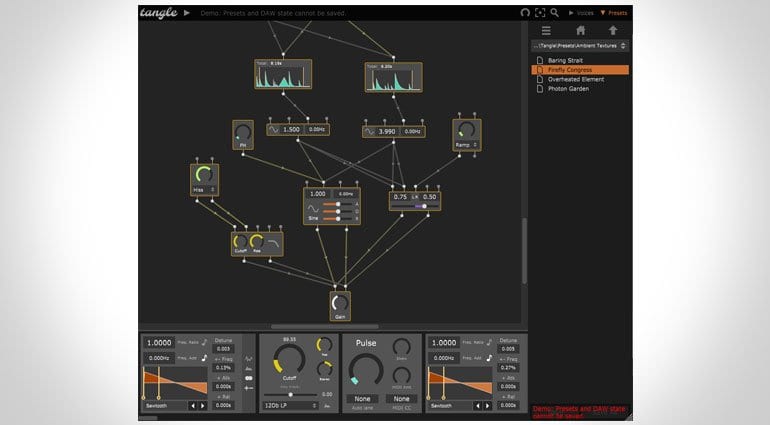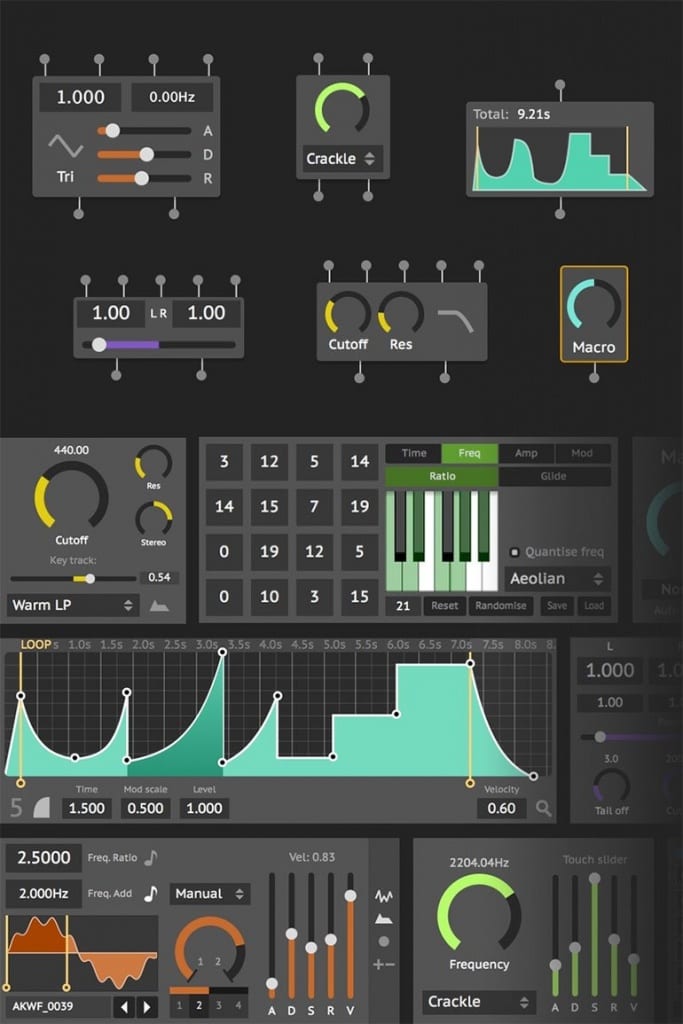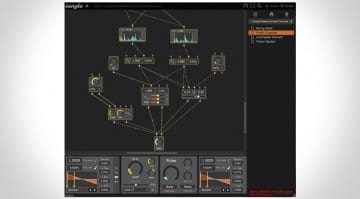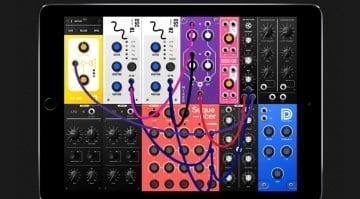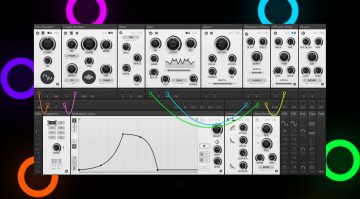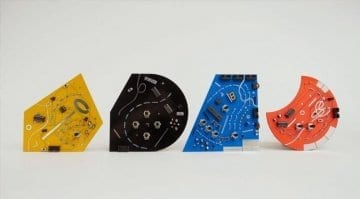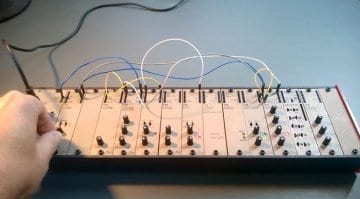Sound Guru lets us Tangle with modular FM synthesis
Grasping the concept of modular synthesis can be somewhat daunting. It’s amazing to be able to patch all sorts of things from here to there but you have to know what you’re doing or it all becomes a bit frustrating. Anyone who has dabbled with the modular structure behind the scenes of a Reaktor patch will know what I mean. Tangle, a modular FM synth from Sound Guru aims to be stunningly simple – but are they kidding themselves?
Let’s un-Tangle it
Tangle comes with 12 components and big black canvas onto which to plop them and wire them together. They cover all the usual suspects: Oscillator, Filter, Noise, Envelope and Sequencer. Then they add in additional processing components in the shape of Quantise, MixPan, Delay, Expression, Scope, a Macro knob and an XY Pad.
The Oscillator also doubles as an LFO and comes with a waveform browser with what looks like a gazillion to choose from – and you can add your own which is nice. Each component has the inputs and output protruding from it in a top-to-bottom kind of way and they look great – very flat, stylish and clear to read. Running your mouse over the little nodes reveals their purpose in a pop-up. Connecting things up is just a matter of dragging between nodes.
Connections
When you first load Tangle into your DAW it arrives with a blank black screen but it seems to make a nice sine style sound if you play your MIDI keyboard. If you scroll around the screen you will hopefully stumble upon an Oscillator and a Macro knob labelled Gain – these appear to be our basic building blocks. You can then right-click in the darkness to pick another component from a list. At this point I would suggest that the idea of being simple and intuitive is not really fully formed. It took me ages to delete the connection from Oscillator to Gain so i could put a filter in-between. I still don’t know how to bring up the data window for the Sequencer, it just appears after a bit of random clicking.
Presets
What perhaps is better is to browse the handful of presets. Ah yes – that’s more like it! Now I can see stuff working and start to do a bit of reverse engineering. The controls on the components can be grabbed and manipulated but once it’s selected you get a more detailed window appear in a row along the bottom. I’ve just discovered that clicking-and-dragging a selection square allows you to select multiple components and have their details appear together. Check out the video below for some great sound and visual examples. You can also zoom in and out in a wonderfully scalable fashion and it’s nicely multi-touchable with a touch screen.
The interaction between components is indicated by the connections glowing and flashing away. In a complex patch it’s quite mesmerising but also very useful indeed in following the signal flow. There is a lot of fun to be had with constructing systems of synthesis or just fiddling with the routing. There are admirable attempts at making it easy to use but you still need a certain amount of know-how and patience to move from frustration to creativity. It’s a great way to learn about synthesis and offers the potential for complex sound design at a great price.
It’s on beta at the moment with an introductory price of only £19.99.
More information available on the Sound Guru Tangle product page.
You are currently viewing a placeholder content from YouTube. To access the actual content, click the button below. Please note that doing so will share data with third-party providers.
